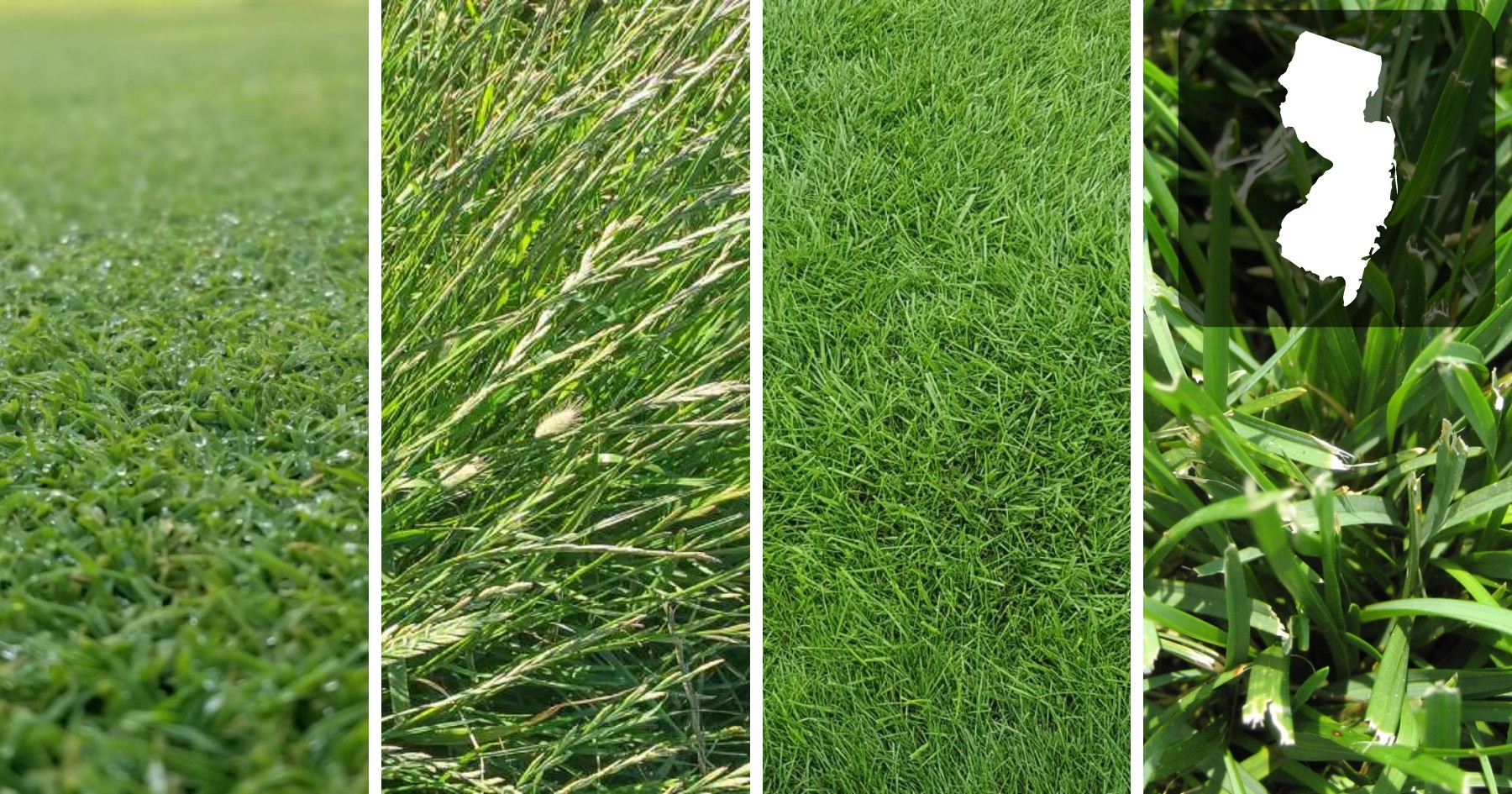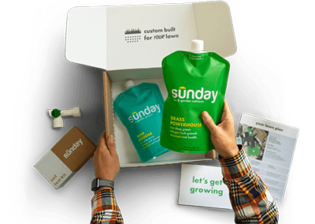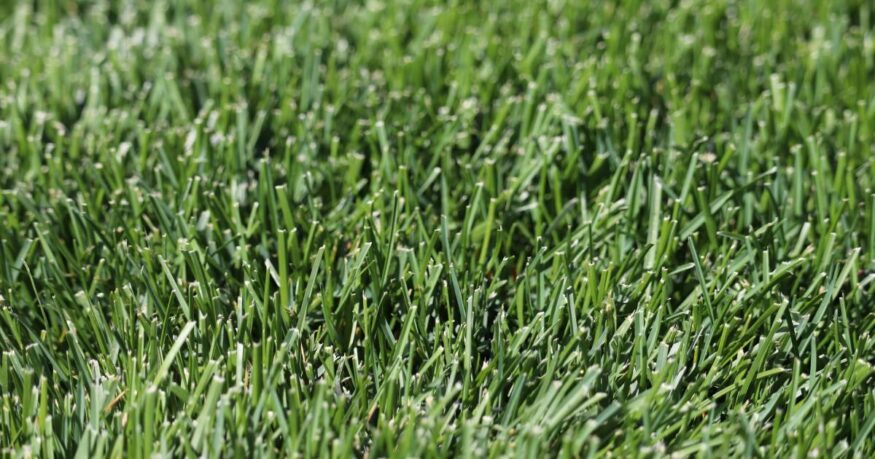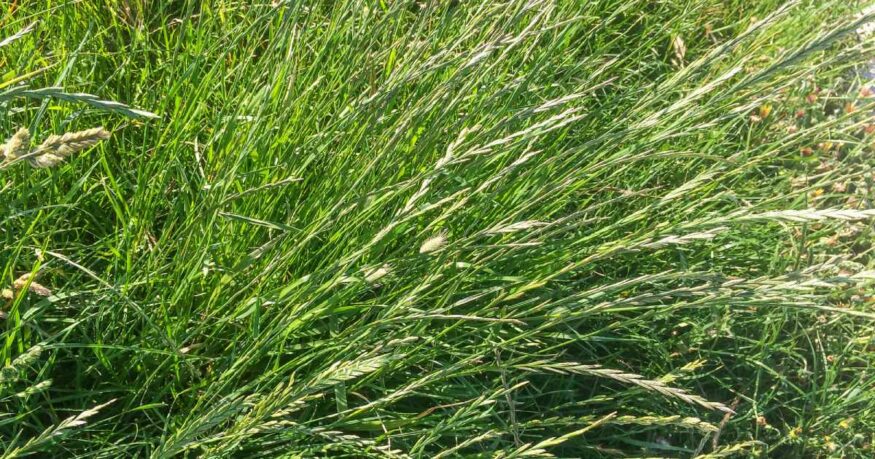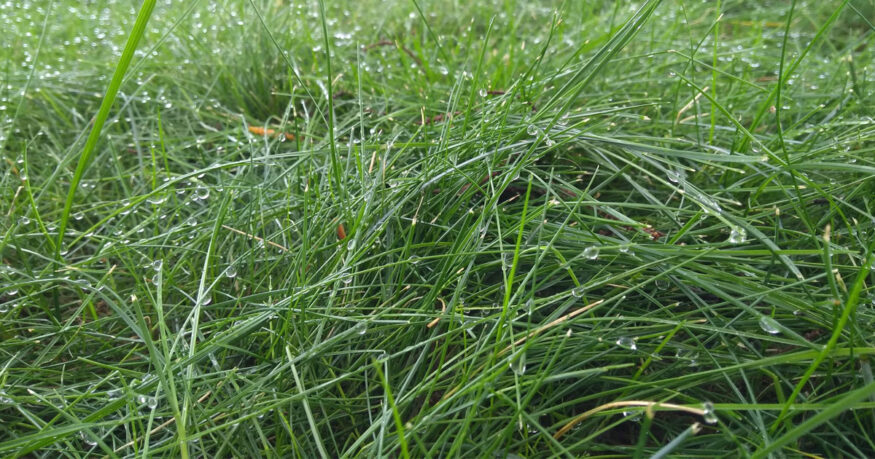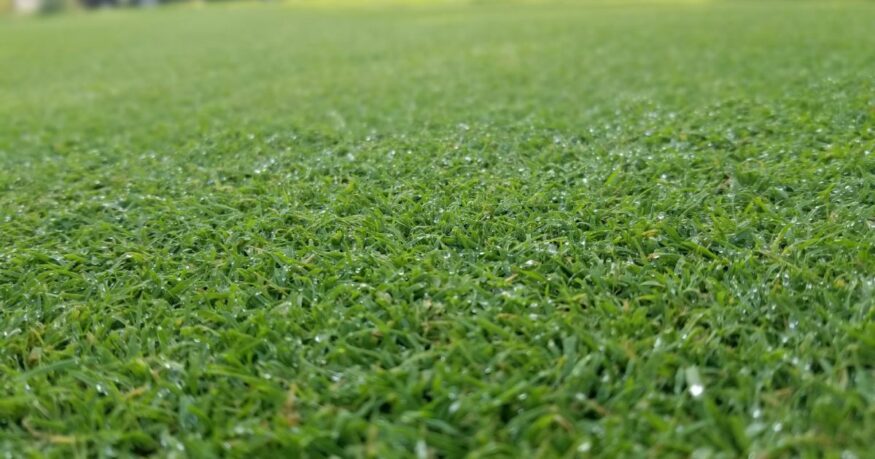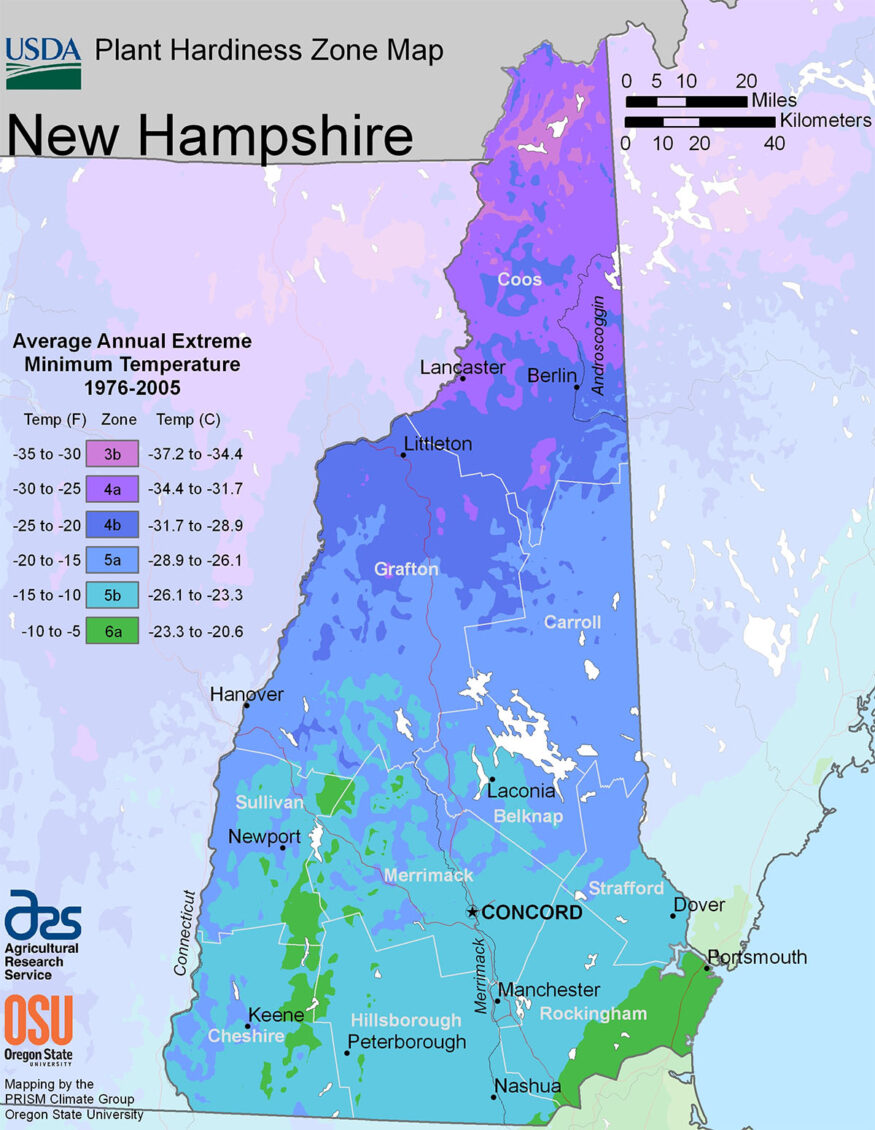Embarking on the quest for the perfect grass seed for your New Hampshire lawn? You’re in the right place. The unique climate of New Hampshire—with its cold winters and varying sunlight—presents a unique set of challenges, including selecting grass that can thrive in these conditions, resist local diseases, and tolerate shade.
As a seasoned horticulturist with years of experience in New England’s distinct growing environments, I’ve navigated these very challenges. This guide is tailored for gardeners and homeowners alike, aiming to transform your lawn into a lush, green oasis.
Like you, I’ve faced the frustration of trial and error in finding the right grass for my lawn, and I’m here to share the fruits of my labor. Let’s take a look at the best grass types for a NH lawn.
Key Takeaways
- Choose cool-season grasses like Kentucky Bluegrass and Fine Fescue for best results in New Hampshire.
- Pay attention to timing, soil conditions, and maintenance when seeding and caring for your lawn.
- Consider factors such as shade tolerance and disease resistance when selecting the right grass seed for your specific landscape.
[ez-toc]
Looking for the best grass seed for your region?
Our smart lawn plans are designed to work perfectly with your local soil and climate conditions, without any of the toxic stuff.
Use the code EHG20 for an instant $20 discount!
- Personalized lawn care: Custom lawn plans based on soil analysis, climate data, and your specific lawn needs.
- Convenience with a conscience: Products that are not only easy to use but also safe for you, your pets, and the planet.
- Science-backed formulas: Bio-based formulas contain effective, natural ingredients like seaweed, molasses, and iron.
- Expert support: Get one-on-one guidance from a real person and rest easy with Sunday's satisfaction guarantee.
Kentucky Bluegrass
| Also Known As | Poa pratensis L. |
| Type of Grass | Cool season perennial |
| Optimal Zones | Northern cool season zone, transition zones |
| Root Structure | Shallow |
| Winter Hardiness | Excellent |
| Shade Tolerance | Poor to Good |
| Water Requirements | High |
| Drought Tolerance | Poor |
| Self Repair Capacity | Excellent |
| Overall Maintenance Requirements | High |
Why Kentucky Bluegrass is The Most Popular Choice For New HAmpshire
Kentucky Bluegrass is a great choice for your New Hampshire lawn. This grass thrives in the state’s climate and provides a beautiful green color and fine texture to your lawn.
This grass seed is known for its drought tolerance and requires very little water once established. It also has good resistance to common diseases, making it a low-maintenance option for your lawn.
When it comes to shade tolerance, Kentucky Bluegrass does best with at least 4 hours of sun daily, ideally under full sun.
To plant Kentucky Bluegrass, choose a well-drained, heavy soil with high fertility and a pH level between 6 and 7.5. The best time to sow the grass seed in New Hampshire is in early fall, from September to November.
For seed options, consider:
- Jonathan Green (11970) Blue Panther Kentucky Bluegrass Grass Seed
- SeedRanch Midnight Kentucky Bluegrass Seed (5 lbs.)
When caring for your Kentucky Bluegrass lawn, remember to mow regularly, maintaining a height of about 2.5 to 3 inches. Irrigate as needed, particularly during dry periods, and apply a balanced fertilizer in the spring, summer, and fall to ensure proper growth.
With proper care, your Kentucky Bluegrass lawn will stay lush and healthy, making it a perfect addition to your New Hampshire home.
Learn More: Read our comprehensive state-by-state grass selection guides here.
Perennial Ryegrass
| Also Known As | Lolium perenne L. |
| Type of Grass | Cool season perennial |
| Optimal Zones | Mild northern zones |
| Root Structure | Deep |
| Winter Hardiness | Good to excellent |
| Shade Tolerance | Moderate |
| Water Requirements | High |
| Drought Tolerance | Good |
| Self Repair Capacity | Excellent wear tolerance |
| Overall Maintenance Requirements | Moderate to high |
What Makes Perennial Ryegrass A Great Grass For New Hampshire
Perennial ryegrass is a top choice for your New Hampshire lawn due to its fast germination, durability, and shade tolerance. Its fine texture and deep green color give your lawn an attractive look while providing excellent resistance to traffic and wear. This grass type is suited for the cooler climates and varying soil conditions of New Hampshire.
One notable benefit of using perennial ryegrass is its ability to tolerate partial shade. However, keep in mind that it prefers full sun for optimal growth. Perennial ryegrass has a relatively low maintenance requirement, which makes it a great option for busy homeowners.
On the downside, it can be susceptible to some common lawn diseases, and might struggle during periods of drought. To minimize these risks, consider mixing it with other grass types like Kentucky bluegrass or fine fescue, which provide better disease resistance and drought tolerance.
Our Perrenial Ryegrass seed recommendations are:
- Pennington Smart Seed Perennial Ryegrass
- Greenview Fairway Formula Grass Seed Perennial Ryegrass Blend
To plant perennial ryegrass, you’ll need to:
- Prepare your soil by loosening the top layer and removing any debris or rocks.
- Apply a quality seed mix containing perennial ryegrass – a standard seeding rate of around 6 lbs per 1,000 sq. ft. is recommended.
- Spread the seeds evenly, ensuring good coverage, using either a hand spreader or a mechanical seeder.
- Gently rake the seeds into the soil, ensuring they are covered by no more than 1/8 inch of soil.
- Water the newly seeded area gently but thoroughly, ensuring the top layer of soil stays moist until germination occurs.
Taking care of your perennial ryegrass lawn involves regular mowing with your lawn mower set to a height of about 2 to 2.5 inches, watering only when required (preferably during cooler morning hours), and conducting timely fertilization according to the soil and specific grass needs.
Monitor your lawn for any signs of disease or pest problems and address them promptly to keep your ryegrass healthy and thriving.
Looking for the best grass seed for your region?
Our smart lawn plans are designed to work perfectly with your local soil and climate conditions, without any of the toxic stuff.
Use the code EHG20 for an instant $20 discount!
- Personalized lawn care: Custom lawn plans based on soil analysis, climate data, and your specific lawn needs.
- Convenience with a conscience: Products that are not only easy to use but also safe for you, your pets, and the planet.
- Science-backed formulas: Bio-based formulas contain effective, natural ingredients like seaweed, molasses, and iron.
- Expert support: Get one-on-one guidance from a real person and rest easy with Sunday's satisfaction guarantee.
Fine Fescue
| Also Known As | Hard fescue, strong creeping red fescue, slender creeping red fescue, sheep fescue, chewings fescue; Festuca L. |
| Type of Grass | Cool season perennial |
| Optimal Zones | Northern zones |
| Root Structure | Medium |
| Winter Hardiness | Excellent |
| Shade Tolerance | Excellent |
| Water Requirements | Medium to High |
| Drought Tolerance | Excellent |
| Self Repair Capacity | Limited |
| Overall Maintenance Requirements | Low |
Why Fine Fescue Grows well in New Hampshire
Fine fescue grasses are an excellent choice for your New Hampshire lawn. They are well-suited to the state’s climate, as they possess strong cold and drought tolerance. These grasses come in several varieties, including creeping red fescue, chewings fescue, and hard fescue.
Your lawn will benefit from fine fescue’s low maintenance needs and high shade tolerance. This type of grass can thrive in areas with less sunlight, making it ideal for lawns with mature trees or tall buildings. They are also known for their fine texture, which contributes to a soft, carpet-like appearance.
Among the best grass seeds for New Hampshire, fine fescue is an eco-friendly option due to its low fertilization and watering needs. However, it’s worth noting that it may not be as durable as other grasses like Kentucky bluegrass or ryegrass, which may perform better in high-traffic areas.
Fine fescue grass is adaptable to various soil types but performs best in well-drained soils with a pH of 5.5 to 6.5.
Try these seed brands:
- Outsidepride Legacy Fine Fescue Shade Tolerant, Soft, Turf, Lawn Grass Seed Blend
- Creeping Red Fine Fescue Seed by Eretz
When planting your fine fescue lawn, it is recommended to sow the seeds in the cooler seasons like early spring or fall. This will allow the grass sufficient time to establish roots before harsher weather conditions set in.
Caring for your fine fescue lawn involves infrequent mowing, with a recommended height of 2 to 3 inches. Make sure your lawn mower blades are sharp to prevent tearing the grass. Aeration is also essential, as it helps to improve air, water, and nutrient penetration into the roots of the grass.
Fine fescue is a relatively low-maintenance and eco-friendly option for your New Hampshire lawn. Its strong shade tolerance and adaptability to various soil types make it a great choice for a beautiful, lush lawn. However, if your yard experiences heavy foot traffic, other options like Kentucky bluegrass or ryegrass might be a better fit.
Bentgrass
Why Bentgrass Is a Popular Grass seed Choice
Bentgrass is a cool-season grass type that can be a good choice for New Hampshire lawns. These grasses are known for their fine texture, dark green color, and ability to thrive in moderate shade.
One of the top varieties of bentgrass for New Hampshire is the Creeping Bentgrass, which is well-suited for lawns and golf courses. It has a high tolerance for drought and diseases, making it a great option for homeowners looking for a low-maintenance grass type.
When choosing the best grass seed for your New Hampshire lawn, keep in mind that bentgrass can require more care compared to other grass types like Kentucky bluegrass or fine fescue. However, its attractive appearance and resistance to diseases make it a popular option for many homeowners.
When planting bentgrass seeds, you should prepare your soil by clearing any debris and testing for the correct pH levels. The ideal time to sow the seeds is in early fall, between September and November. Ensure the soil remains consistently moist during the germination period, which typically lasts around three weeks.
To care for your bentgrass lawn, it’s essential to maintain a consistent mowing schedule, cutting the grass to a height of 2-3 inches. Additionally, fertilize your lawn during the growing season and periodically aerate the soil to promote a healthy root system.
Regardless of whether you’re seeding a new grass lawn or looking for the best grass seed for existing lawns, bentgrass could be a great choice for your New Hampshire home. Its fine texture, attractive color, and resistance to diseases make it especially suited for specific areas in the state, such as the Lakes Region and the Monadnock Region. Remember to consider both the pros and cons of bentgrass and follow proper planting and maintenance guidelines to ensure a lush, healthy lawn.
New Hampshire’s Climate And Growing Challenges For Lawns
Climate
New Hampshire experiences a variety of weather conditions, including cold winters and erratic summer seasons. As a homeowner, it’s crucial to choose a cool-season grass like Kentucky bluegrass or fescue, which can handle the region’s fluctuations.
Soil Conditions
Your lawn’s soil pH should ideally be between 6-7.5 and it should be well-drained, heavy, and highly fertile. Grasses like Kentucky bluegrass perform best in these conditions. If your soil is not suitable, consider adding appropriate soil amendments.
Weeds
Weeds can be a significant problem for New Hampshire lawns, competing with grass for nutrients, water, and space. To manage weeds effectively, practice good lawn care habits like mowing, watering, and fertilizing regularly.
Additionally, use a pre-emergent herbicide to prevent weed growth.
Pests & Diseases
Pests and diseases may affect your lawn, causing unsightly patches and thinning grass. Monitor your lawn for any signs of infestation and take appropriate action like using a pest control product or applying a fungicide when needed.
Other Challenges
Shade can pose a challenge for grasses in New Hampshire’s climate. If your lawn has areas with limited sunlight, consider using shade-tolerant grass blends such as Scott’s classic grass seed mix, which contain a balance of Kentucky bluegrass, perennial ryegrass, and fine fescues.
Another key challenge is water management. Select drought-tolerant grass types like Bermuda grass to minimize water usage and conserve resources. However, Bermuda grass is not shade-tolerant, so only use it in lawns with full sun exposure.
Seeding And Lawn Care
When choosing the best grass seed for New Hampshire, consider factors such as drought tolerance, disease resistance, and shade tolerance. For a top-performing grass in the New Hampshire area, select Kentucky Bluegrass, which thrives in well-drained and highly fertile soils with a pH between 6-7.5.
To create a lush, attractive lawn, you’ll want to plant your grass seed during the early fall, specifically from September to November. This is the ideal time to fertilize and prepare the land for optimal germination. To enhance wear tolerance, consider utilizing a seed blend containing both Kentucky Bluegrass and Ryegrass.
Related Article: Follow our lawn care plan for the perfect lawn.
While Kentucky Bluegrass is a popular choice, it’s essential to consider how much sunlight exposure your lawn receives. For lawns with a mix of sun and shade, a fine fescue blend is a great option. This grass type adapts to various soil conditions and thrives in full sun to moderate shade.
Managing soil health and nutrient balance is crucial in maintaining a thriving lawn. Regularly test your soil to ensure an optimal pH level and use lawn care products, such as fertilizers and lime, to keep the soil’s nutrients at their best.
Mow your lawn at the proper height, typically 2-3 inches for cool-season grasses, and remember to sharpen your lawn mower blades for clean cuts.
Watering is a critical aspect of lawn care. During the growing season, provide your grass with an inch of water per week, either through rainfall or irrigation. Early morning is the best time to water, as it allows for the moisture to reach the grass’ roots and minimizes evaporation.
Incorporating clover seeds into your lawn can improve soil fertility and provide natural nutrients. Some blends may already contain clover, which can help reduce fertilizer use and contribute to a healthy and environmentally friendly lawn.
Finally, it’s essential to keep your lawn free from weeds and pests. Utilize grass seed blends optimized for disease resistance and employ proper pest control measures. A well-maintained lawn will ensure a thriving and beautiful outdoor space for your enjoyment.
Looking for the best grass seed for your region?
Our smart lawn plans are designed to work perfectly with your local soil and climate conditions, without any of the toxic stuff.
Use the code EHG20 for an instant $20 discount!
- Personalized lawn care: Custom lawn plans based on soil analysis, climate data, and your specific lawn needs.
- Convenience with a conscience: Products that are not only easy to use but also safe for you, your pets, and the planet.
- Science-backed formulas: Bio-based formulas contain effective, natural ingredients like seaweed, molasses, and iron.
- Expert support: Get one-on-one guidance from a real person and rest easy with Sunday's satisfaction guarantee.
